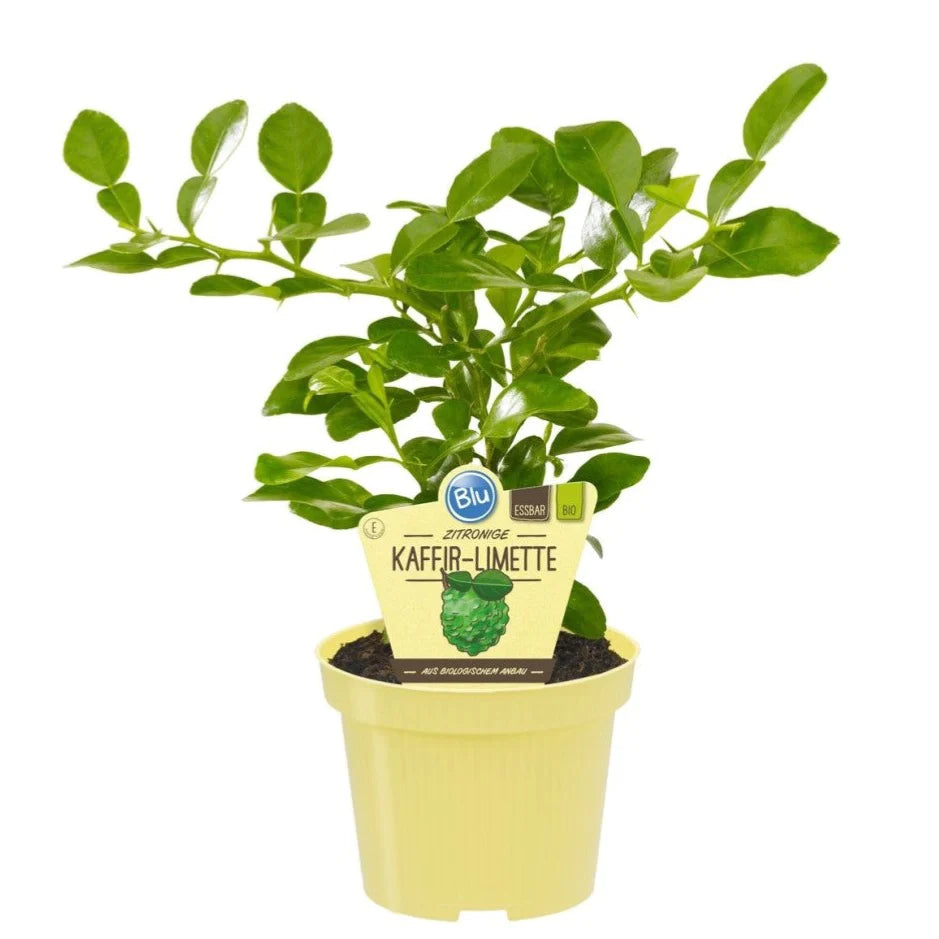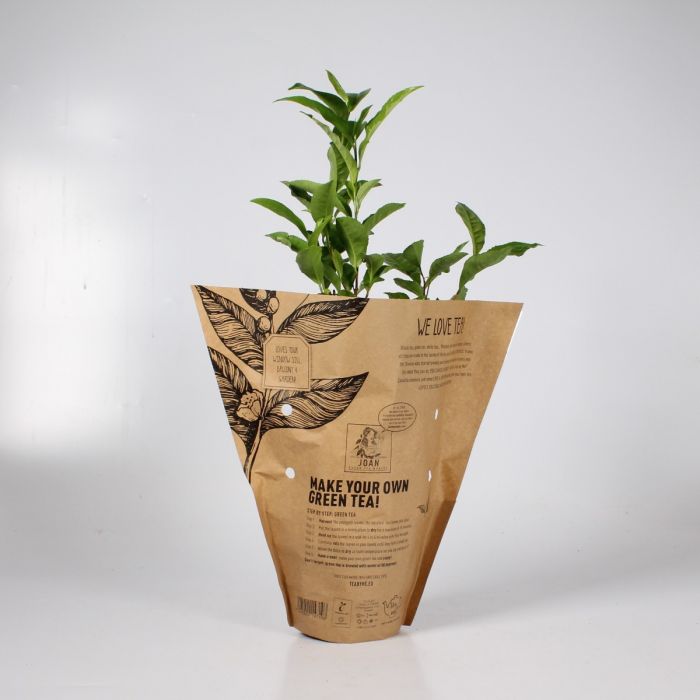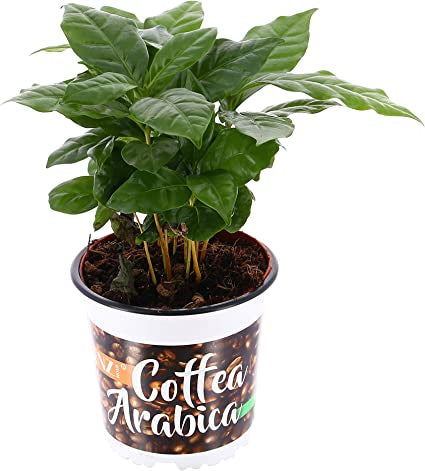Your Cart is Empty
FREE DELIVERY OVER £60
Menu

0
Your Cart is Empty
FREE DELIVERY OVER £60

Your Cart is Empty
EXTERIOR PLANTING
CHRISTMAS TREES AND DISPLAYS
13 min read

Tea has been an essential part of human culture for thousands of years, cherished for its unique flavors, soothing qualities, and various health benefits. The journey of tea began with the discovery of the Camellia sinensis plant, an evergreen shrub native to East Asia, which is the source of all true tea types, including green, black, oolong, and white tea.
The Camellia sinensis plant has a rich history that dates back to ancient China, where it was first cultivated and consumed as a medicinal beverage. According to legend, Emperor Shen Nung discovered tea around 2737 BCE when leaves from a nearby tea plant accidentally fell into his boiling water. The resulting infusion was found to be refreshing and invigorating, leading to the spread of tea as a popular beverage throughout the region.
Tea cultivation eventually expanded beyond China, reaching Japan, Korea, and other parts of Asia. The practice of tea drinking became deeply ingrained in these cultures, giving rise to unique tea ceremonies and traditions. By the 16th century, tea reached Europe via maritime trade routes, where it quickly gained popularity, especially in Britain. This demand for tea led to the establishment of extensive tea plantations in countries like India, Sri Lanka, and Kenya, turning the humble Camellia sinensis plant into a global commodity.
Camellia sinensis Varieties: There are two main varieties of the Camellia sinensis plant: Camellia sinensis sinensis and Camellia sinensis assamica. Each variety has distinct characteristics that make it suitable for different growing conditions and tea types.
Camellia sinensis sinensis: This smaller-leafed variety is native to China and thrives in cooler climates with higher elevations. It is the primary source for green and white teas, as well as some oolong and black teas. Its leaves are delicate and produce a more subtle and nuanced flavor profile.
Camellia sinensis assamica: Originating from the Assam region in India, this variety has larger leaves and is more tolerant of heat and humidity. It forms the basis for most black and many oolong teas, as well as some green and white teas. The assamica variety yields a bolder, more robust flavor, often with a malty or earthy character.

Green tea is made from fresh Camellia sinensis leaves that are quickly steamed or pan-fired to prevent oxidation. This minimal processing preserves the green color and natural flavor of the leaves, resulting in a tea that is delicate, grassy, and often slightly astringent.
Processing steps:
Black tea undergoes a more extensive oxidation process compared to green tea, resulting in a darker color and a bold, robust flavor. The leaves are typically withered, rolled, and then allowed to oxidize before being dried, giving black tea its characteristic malty, fruity, or earthy notes.
Processing steps:
Oolong tea is a partially oxidized tea that falls between green and black tea in terms of flavor and color. The leaves undergo a carefully controlled oxidation process, giving oolong tea a diverse range of flavors, from floral and fruity to creamy and toasty.
Processing steps:
White tea is the least processed of all tea types, made from young leaves and buds that are simply allowed to wither and dry in the sun or under controlled conditions. This minimal processing results in a delicate tea with a subtle, natural sweetness and a light, refreshing flavor.
Processing steps:
Each tea type offers a unique flavor profile and sensory experience, derived from the different processing methods applied to the Camellia sinensis leaves.
Choosing the Right Location and Planting Site for Your Tea Garden
Selecting the proper location and planting site for your tea garden is crucial for the successful cultivation of Camellia sinensis plants. Consider the following factors when choosing the best spot to grow your tea plants:
Climate and hardiness zones: Tea plants thrive in USDA Hardiness Zones 7-9, although they can be grown in colder climates with proper winter protection or as container plants brought indoors. Ensure that your region's climate is suitable for tea cultivation before starting your garden.
Sunlight requirements: Camellia sinensis plants prefer partial shade to full sun. Choose a location that receives morning sunlight and some afternoon shade to protect the plants from intense heat, which can cause leaf scorching. Young plants may need more shade and protection from strong sunlight.
Soil type and drainage: Tea plants require well-draining, acidic soil with a pH between 4.5 and 6.5. Avoid planting in areas with heavy clay or poorly draining soils, as this can lead to root rot. If your garden has less-than-ideal soil conditions, consider amending the soil or growing your tea plants in raised beds or containers.
Soil pH: Test your soil's pH before planting and amend it if necessary. You can use sulfur to lower the pH or lime to raise it, creating the ideal acidic environment for your tea plants.
Air circulation: Good air circulation is essential for preventing fungal diseases and promoting healthy growth. Avoid planting your tea plants in low-lying areas or near structures that could block airflow.
Companion plants: Tea plants thrive when grown near other acid-loving plants, such as azaleas, rhododendrons, or blueberries. Consider incorporating these plants into your tea garden to create a visually appealing and harmonious planting area.
Space requirements: Tea plants can grow up to 6-10 feet tall and 3-4 feet wide, although they can be pruned to maintain a smaller size. Space your plants at least 3-4 feet apart to provide adequate room for growth.
By carefully considering these factors and selecting the right location and planting site, you can create a thriving tea garden that provides healthy, flavorful leaves for brewing your own homegrown tea.
Can you successfully grow Camellia Sinensis in UK?

The short answer is YES you can grow tea plants in UK. Growing tea plants (Camellia sinensis) in the UK might seem like an ambitious endeavor due to the region's cooler climate, but with careful planning and attention to detail, it is possible to cultivate these plants successfully.
Choosing the Right Variety
When growing tea plants in the UK, it's essential to select the most suitable variety for the region's cooler climate. Opt for the Camellia sinensis sinensis variety, which is better adapted to cooler temperatures and higher elevations than the Camellia sinensis assamica variety.
Finding the Ideal Location
Selecting the right location for your tea plants is crucial for their success in the UK. Consider the following factors when choosing a planting site:
Shelter: Choose a sheltered site that protects your tea plants from harsh winds and extreme cold. A south-facing slope or a spot near a wall or hedge can offer additional warmth and protection.
Microclimate: Try to create a microclimate that mimics the natural environment of tea plants. You can achieve this by planting your tea plants near bodies of water, in sun-traps, or in a greenhouse or polytunnel for added warmth and humidity.
Container gardening: Consider growing your tea plants in containers, allowing you to move them indoors during the winter months or periods of extreme cold to protect them from frost and freezing temperatures.
Providing the Necessary Care
To ensure the success of your tea plants in the UK, follow these guidelines for proper care:
Cold hardiness: Camellia sinensis plants can generally tolerate temperatures down to around 14°F (-10°C). Make sure to protect your plants during the coldest months by using mulch, fleece, or bubble wrap to insulate them and shield their roots from freezing temperatures.
Adequate drainage: Tea plants require well-draining soil to prevent root rot. Amend your soil with organic matter, such as compost or leaf mold, to improve drainage and create a suitable growing environment for your plants.
Sunlight requirements: Camellia sinensis plants prefer partial shade to full sun. Choose a location that receives morning sunlight and some afternoon shade to protect the plants from intense heat, which can cause leaf scorching.
Soil type and pH: Tea plants thrive in acidic soil with a pH between 4.5 and 6.5. Test your soil's pH before planting and amend it if necessary, using sulfur to lower the pH or lime to raise it.
Monitor and adjust: Keep a close eye on your tea plants and adjust their growing conditions as needed. Provide additional shading during hot spells or bring potted plants indoors if temperatures drop too low.
Growing tea plants in the UK can be a rewarding experience, allowing you to cultivate and harvest your own tea leaves. By choosing the appropriate variety, finding the ideal location, and providing the necessary care, you can successfully grow Camellia sinensis plants and enjoy the unique flavors of homegrown tea.

Growing your own tea plants allows you to enjoy the unique flavors and nuances of homegrown tea leaves. In this guide, we'll explore the process of harvesting tea leaves, transforming them into green, black, oolong, or white tea, and storing them for optimal freshness and flavor.
Timing and technique are crucial when harvesting tea leaves to ensure the best flavor and quality. Here are some guidelines to follow:
Techniques for Processing Leaves into Green, Black, Oolong, and White Tea
The processing techniques applied to the harvested leaves determine the type of tea produced. Here's a breakdown of the methods used for each tea type:
Green tea processing aims to prevent oxidation and preserve the leaves' green color and natural flavor.
Processing steps:
Black tea undergoes extensive oxidation, resulting in a dark color and robust flavor.
Processing steps:
Oolong tea is partially oxidized, falling between green and black tea in terms of flavor and color.
Processing steps:
White tea is minimally processed, with leaves simply allowed to wither and dry, resulting in a delicate and subtly sweet flavor.
Processing steps:
Tips for Drying and Storing Homegrown Tea Leaves
Proper drying and storage are essential to maintain the freshness and flavor of your homegrown tea leaves:
Storing dried tea leaves properly is essential to maintain their freshness, flavor, and aroma. Follow these guidelines to ensure the best possible storage conditions for your dried tea leaves:
Airtight containers: Use airtight containers, such as glass jars, metal tins, or ceramic canisters, to store your dried tea leaves. These containers will help protect the leaves from air, moisture, and external odors, which can affect their taste and quality.
Avoid clear containers: If using glass jars, opt for opaque or dark-colored ones to prevent light exposure, which can degrade the tea leaves over time. If you only have clear containers, store them in a dark place, such as a cupboard or pantry, to minimize light exposure.
Cool, dry place: Store your tea containers in a cool, dry place away from heat sources and moisture. Excessive heat or humidity can cause the tea leaves to deteriorate faster, losing their flavor and aroma.
Separate storage: Keep different types of tea leaves stored separately to prevent their flavors and aromas from mingling. Stronger teas, like black or heavily scented teas, can influence the taste of more delicate teas, such as green or white tea.
Avoid strong odors: Store your tea leaves away from strong-smelling items, like spices or cleaning supplies, as the tea can absorb these odors and have their taste altered.
Label and date: Label your tea containers with the type of tea and the date it was processed or purchased. This will help you keep track of your tea's freshness and ensure you use older tea leaves before they lose their optimal flavor.
Rotate your stock: Use a first-in, first-out system for your tea leaves, using the oldest leaves first. This will help maintain the freshness of your tea collection.
Bulk storage: If you have a large amount of dried tea leaves, store the bulk of them in a separate, larger airtight container, and keep a smaller container for everyday use. This way, you minimize the exposure of the bulk tea to air and light each time you use the leaves.
Growing your own tea plants not only offers a unique and rewarding gardening experience but also provides numerous health benefits. Homegrown tea leaves contain a variety of antioxidants, vitamins, and minerals that contribute to overall wellness. In this article, we'll explore the health benefits of homegrown tea and how cultivating your own tea garden can contribute to a healthier lifestyle.
Antioxidant Properties
Tea leaves, particularly green and white tea, are rich in antioxidants known as polyphenols, which help combat free radicals in the body. Free radicals can cause oxidative stress, which contributes to aging, inflammation, and chronic diseases. By regularly consuming homegrown tea, you can increase your antioxidant intake and help protect your body from oxidative damage.
Improved Heart Health
Regular tea consumption has been associated with a reduced risk of developing heart disease. The antioxidants found in tea, especially flavonoids, can help improve blood vessel function, reduce inflammation, and lower blood pressure. Homegrown tea, which is free from artificial additives, can contribute to better heart health when consumed as part of a balanced diet.
Enhanced Cognitive Function
Tea contains a compound called L-theanine, an amino acid that promotes relaxation and reduces stress. When combined with the moderate caffeine content in tea, L-theanine can improve cognitive function, focus, and alertness. Enjoying a cup of homegrown tea can provide a gentle boost to your mental performance without causing the jitters associated with stronger stimulants like coffee.
Better Digestion
Tea, particularly green tea, has been shown to aid digestion and promote a healthy gut. The polyphenols found in tea can help balance gut bacteria and reduce inflammation, contributing to a healthier digestive system. Incorporating homegrown tea into your daily routine can support better digestion and overall gut health.
Weight Management
Tea, especially green tea, has been associated with weight management and fat oxidation. The combination of caffeine and catechins found in tea can help boost metabolism and encourage the body to burn fat more efficiently. Consuming homegrown tea without added sugar or sweeteners can support your weight management goals as part of a balanced diet and active lifestyle.
Stronger Immune System
Tea contains various compounds that can support a healthy immune system. The antioxidants and anti-inflammatory properties found in tea can help protect the body from infections and illnesses. Consuming homegrown tea regularly can contribute to a stronger immune system and better overall health.
Conclusion
Growing your own tea plants and enjoying the fruits of your labor can contribute to a healthier lifestyle. Homegrown tea offers numerous health benefits, from antioxidant properties and improved heart health to enhanced cognitive function and better digestion. By cultivating your own tea garden, you can enjoy a fresh and natural source of wellness, one cup at a time.

Bring the Magic of Tea to Your Garden: Order Your Tea Plant Today!
Discover the joy of cultivating your very own tea garden with our premium Camellia sinensis tea plants. Savor the fresh, unique flavors of homegrown tea leaves while enjoying the numerous health benefits they offer. Experience the rewarding process of nurturing, harvesting, and processing your tea leaves - all from the comfort of your backyard!
Why choose our tea plants?
Order your tea plant from us today and unlock these exclusive benefits:
Don't miss this opportunity to embark on an enchanting tea-growing journey. Transform your garden into a haven of flavor and wellness with our beautiful, high-quality Camellia sinensis plants.
Comments will be approved before showing up.
Sign up to get the latest on sales, new releases and more …


